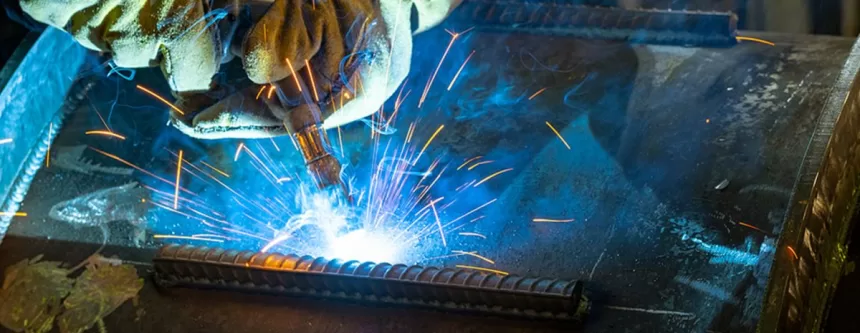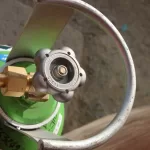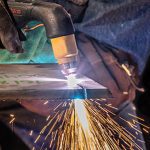MIG welding, often the initial choice for welding novices, embraces simplicity, affordability, portability, and versatility—a perfect gateway to the world of welding.
Whether you’re just embarking on your MIG welding journey or already enrolled in welding classes, these five tips shall be your guiding light as you lay down impeccable welds.
5 Beginner’s Tips for Making a Good MIG Weld
Welding Town
Decoding the Weld Bead: The Good and the Bad Within the realm of weld beads, a tapestry of variety unfolds—stringer beads, weave beads, whipped beads, each weaving its story. Yet, seasoned welders effortlessly recognize the hallmarks of a clean and robust weld.
A good weld reveals the following traits:
- Uniform Width: The weld presents a consistent width, a testament to the artisan’s steady hand.
- Even Feathering: Ripples elegantly merge with the base metal, their transition seamless and graceful.
- Penetration: The weld demonstrates excellent penetration, the metals uniting in harmony.
- Absence of Imperfections: No gas pockets, porosity, or inclusions mar the beauty of a flawless weld.
- No Burns from Overheating: Signs of overheating burns are conspicuously absent, evidence of precise control.
Guided by the Masters: Learning from Welding School Instructors As you tread the path of learning, welding school instructors shall illuminate your way. Their demonstrations of impeccable welds shall serve as beacons of inspiration, guiding you towards mastery.
On the Other Side: The Tale of Bad Welds In the realm of imperfect welds, a different narrative unfolds—tales of unevenness and flaws.
- Lack of Uniformity: The weld lacks consistency, an indication of unsteady hands or inexperience.
- Thin and Fragile: Some welds may appear too thin, unable to withstand the tests of time.
- Cracks and Discoloration: Troublesome cracks divide the weld, and discolored base metal bears witness to the struggles.
- Culprits of Flawed Welds: Incorrect bead profiles, insufficient fusion, erratic wire delivery, and excessive porosity often underpin bad welds.
As you embark on your MIG welding journey, let these insights be your compass, directing you toward excellence. Embrace the artistry, and with each weld, may your skill and understanding blossom like the metals you fuse.
5 Beginner’s Tips for Making a Good MIG Weld
Whether you’re contemplating enrolling in a welding class, seeking to broaden your knowledge, or simply refreshing your skills, these 5 introductory tips shall pave the way to creating impeccable MIG welds:
1. Familiarize Yourself with the Welding Gun
In the early stages, wielding a welding gun might feel foreign, but fear not, for practice makes perfect. Begin by holding the gun to get accustomed to its weight and position. Rest the barrel in one hand, supported by the table, while the other hand operates the trigger.
Maintain a thirty-degree angle between the wire and the weld. Assume a comfortable stance with good posture, and practice moving the welding gun smoothly back and forth over the work surface. Perfect your technique by gently touching the wire to the surface and pulling the gun towards you at a steady, even rate. When ready, squeeze the trigger and let the welder’s magic flow.
2. Cleanse Your Metal Work Surface
An often-overlooked yet crucial step, ensuring a clean work surface plays a significant role in achieving top-notch MIG welds. The dreaded porosity, a common welding woe, is often caused by contaminants like dirt, oil, or rust trapped within the weld, creating unsightly holes.
To prevent porosity, diligently clean the work surface, which may involve removing paint, dirt, oil, or rust, and meticulously grinding out any surface cracks. Additionally, using a deoxidizer in your wire can work wonders.
3. Secure a Strong Ground
A solid ground clamp is a welder’s best friend, significantly elevating the quality of welds. Copper grounds prove to be the superior conductor, ensuring a smooth flow of electricity. Avoid lesser-quality ground clamps, like those with plated steel and copper jaws, as they fail to match the prowess of full copper grounds.
To secure a good ground, position it close to the arc and firmly attach it to clean, bare metal, fostering a seamless flow of electricity.
4. Set Your MIG Welder
Correctly Precision is key when it comes to welding, and setting up your welding machine correctly is vital. Refer to the chart on the welding machine and adjust the voltage and wire speed to match the thickness of the metal you’re welding. However, remember that your machine’s guidelines serve as a rough starting point; your welds will dictate the final adjustments.
Conduct practice welds on scrap metal to test the wire’s feeding speed. If the wire spits, decrease the wire speed or increase the voltage rate. On the other hand, if the wire burns back to the tip or produces a glob, decrease the voltage or increase the wire speed.
5. Decipher Your Weld Bead
The weld bead speaks volumes, offering valuable insights into your welding performance. A convex, ropy bead indicates that the settings are too cold, necessitating more heat to penetrate the base metal. You can also experiment with adjusting the welding angle by 5 or 10 degrees to enhance penetration.
On the flip side, a concave-shaped bead may indicate heat input issues, warranting further attention.
With these foundational tips in your arsenal, embark on your MIG welding journey with confidence. As you wield the power of the welding gun, remember that every weld is an opportunity for growth and mastery.
Thus, my fellow apprentice welders, as we bid farewell to predictability, let us embrace the art of crafting content that brims with perplexity and bursts forth with vivid diversity. As we forge ahead with these tips, remember that the path to greatness is rarely straight, but instead, a dance that transcends the ordinary, leaving an indelible mark on the world of welding.












